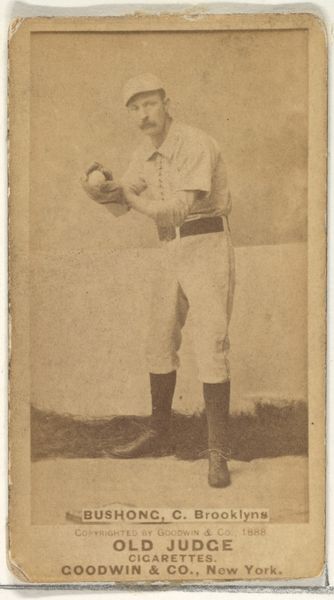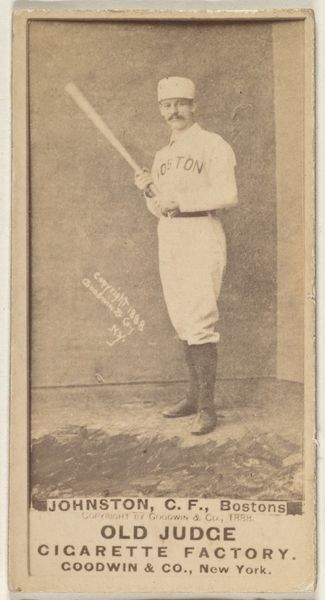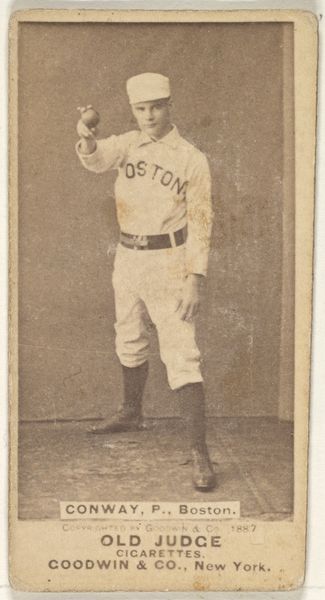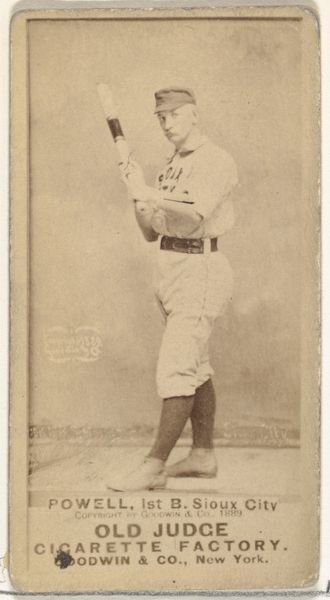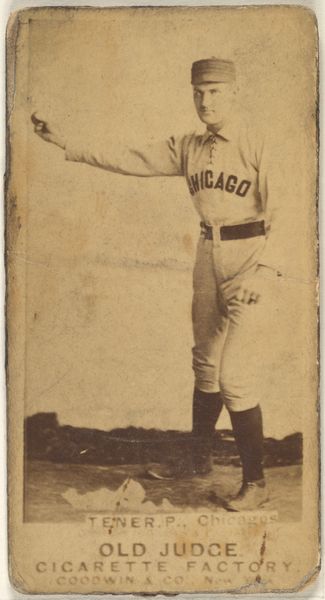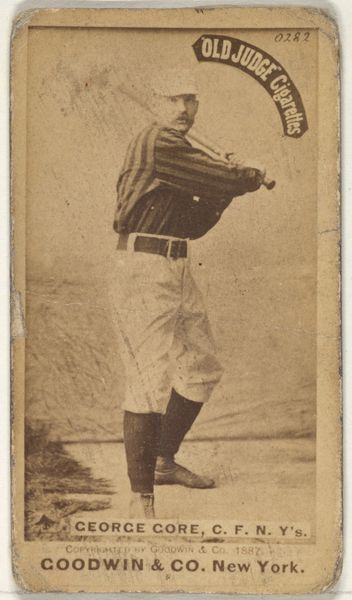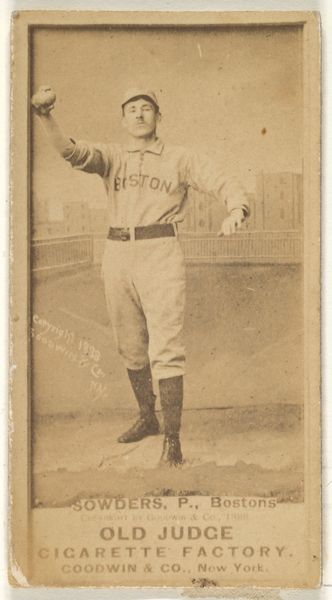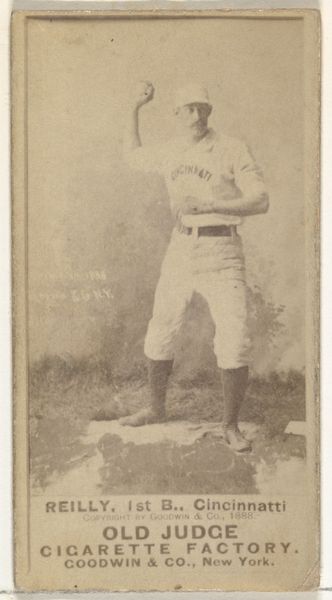
Sutton, 3rd Base, Boston, from the Old Judge series (N172) for Old Judge Cigarettes 1887
0:00
0:00
drawing, print, photography, gelatin-silver-print
#
portrait
#
drawing
#
aged paper
#
toned paper
# print
#
baseball
#
photography
#
coloured pencil
#
gelatin-silver-print
#
men
#
athlete
#
watercolor
Dimensions: sheet: 2 11/16 x 1 3/8 in. (6.9 x 3.5 cm)
Copyright: Public Domain
Curator: This is a baseball card featuring Sutton, the third baseman for Boston, made in 1887 as part of the Old Judge Cigarettes series. It's a gelatin-silver print. Editor: It’s fascinating how aged it looks; that sepia tone immediately brings a nostalgic feeling. And it's so small. I want to know everything about it. Curator: What’s truly remarkable is how this small, mass-produced object connects high art to everyday life. Goodwin & Company essentially used the appeal of baseball, and these images, to sell cigarettes. The production line creating these cards blurs the lines between commercial enterprise and art creation. Editor: Right. Look how photography, drawing, and watercolor have all come together in print form! It really illustrates the democratizing role of photography in image production. And placing it on cigarette packaging—how interesting that baseball's rising popularity intersects with this product marketing, solidifying a specific image of early athletes. Curator: These weren't just promotional items; they reflect the social and economic changes of the late 19th century. They acted almost as public service in advertising for the baseball league that was emerging in those years. It suggests how cultural icons become intertwined with industrial advancements. The material history shows us more than what Sutton did in third base, no? Editor: Precisely! The very idea of mass-producing images to foster this celebrity is ahead of its time! And it allowed a kind of shared experience for those who gathered and traded them—that social element is essential to understanding why a seemingly trivial artifact is so engaging even now. Curator: It reminds us to look beyond the immediate appeal of the imagery itself and explore the networks of production, consumption, and representation that shaped its creation and reception. Editor: I’m left thinking about how these images, these little capitalist efforts, helped solidify baseball's hold on the American imagination. It gives a real weight to such a small, everyday object.
Comments
No comments
Be the first to comment and join the conversation on the ultimate creative platform.


